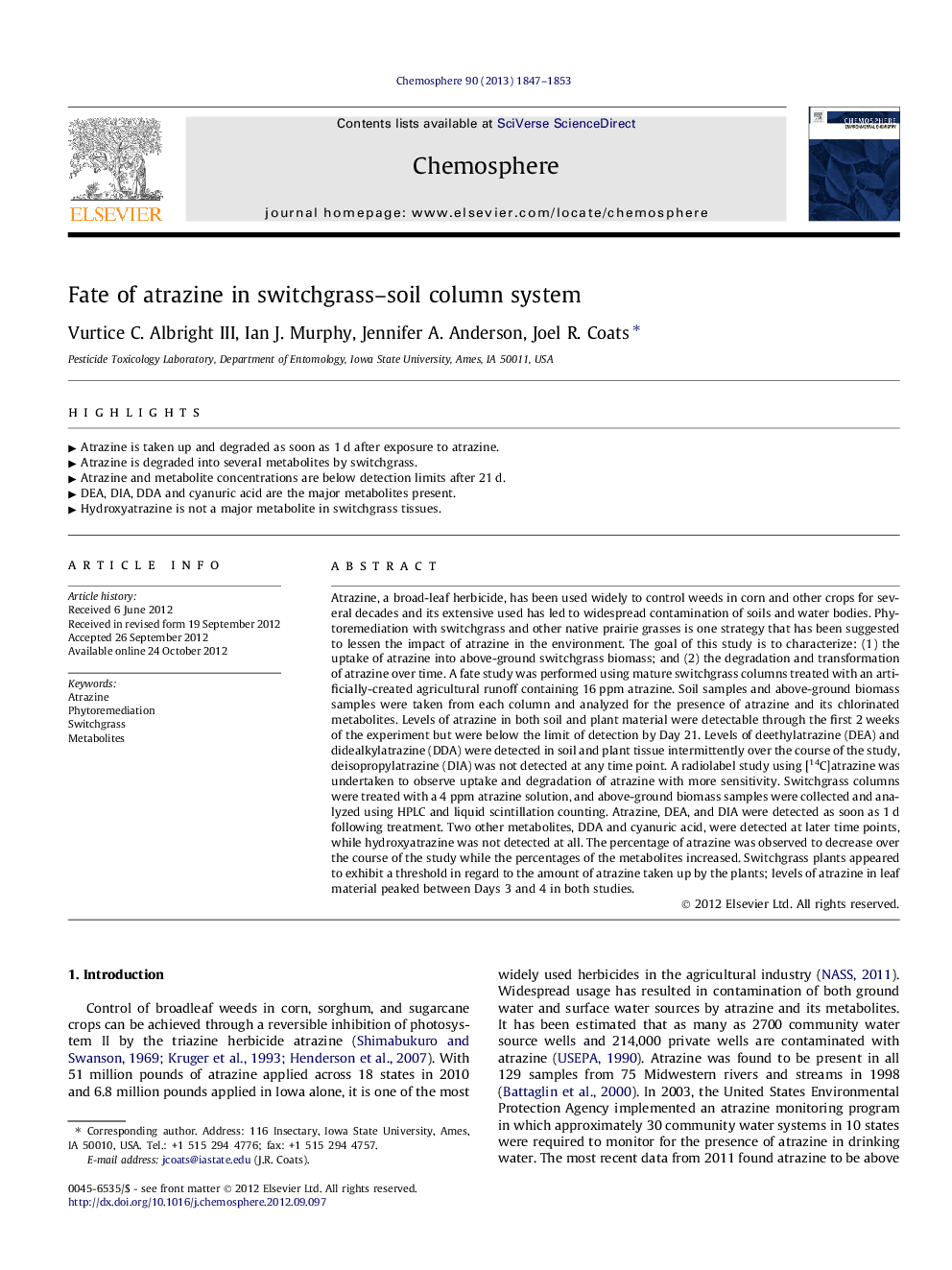| کد مقاله | کد نشریه | سال انتشار | مقاله انگلیسی | نسخه تمام متن |
|---|---|---|---|---|
| 6311082 | 1307499 | 2013 | 7 صفحه PDF | دانلود رایگان |
Atrazine, a broad-leaf herbicide, has been used widely to control weeds in corn and other crops for several decades and its extensive used has led to widespread contamination of soils and water bodies. Phytoremediation with switchgrass and other native prairie grasses is one strategy that has been suggested to lessen the impact of atrazine in the environment. The goal of this study is to characterize: (1) the uptake of atrazine into above-ground switchgrass biomass; and (2) the degradation and transformation of atrazine over time. A fate study was performed using mature switchgrass columns treated with an artificially-created agricultural runoff containing 16Â ppm atrazine. Soil samples and above-ground biomass samples were taken from each column and analyzed for the presence of atrazine and its chlorinated metabolites. Levels of atrazine in both soil and plant material were detectable through the first 2Â weeks of the experiment but were below the limit of detection by Day 21. Levels of deethylatrazine (DEA) and didealkylatrazine (DDA) were detected in soil and plant tissue intermittently over the course of the study, deisopropylatrazine (DIA) was not detected at any time point. A radiolabel study using [14C]atrazine was undertaken to observe uptake and degradation of atrazine with more sensitivity. Switchgrass columns were treated with a 4Â ppm atrazine solution, and above-ground biomass samples were collected and analyzed using HPLC and liquid scintillation counting. Atrazine, DEA, and DIA were detected as soon as 1Â d following treatment. Two other metabolites, DDA and cyanuric acid, were detected at later time points, while hydroxyatrazine was not detected at all. The percentage of atrazine was observed to decrease over the course of the study while the percentages of the metabolites increased. Switchgrass plants appeared to exhibit a threshold in regard to the amount of atrazine taken up by the plants; levels of atrazine in leaf material peaked between Days 3 and 4 in both studies.
⺠Atrazine is taken up and degraded as soon as 1 d after exposure to atrazine. ⺠Atrazine is degraded into several metabolites by switchgrass. ⺠Atrazine and metabolite concentrations are below detection limits after 21 d. ⺠DEA, DIA, DDA and cyanuric acid are the major metabolites present. ⺠Hydroxyatrazine is not a major metabolite in switchgrass tissues.
Journal: Chemosphere - Volume 90, Issue 6, February 2013, Pages 1847-1853
